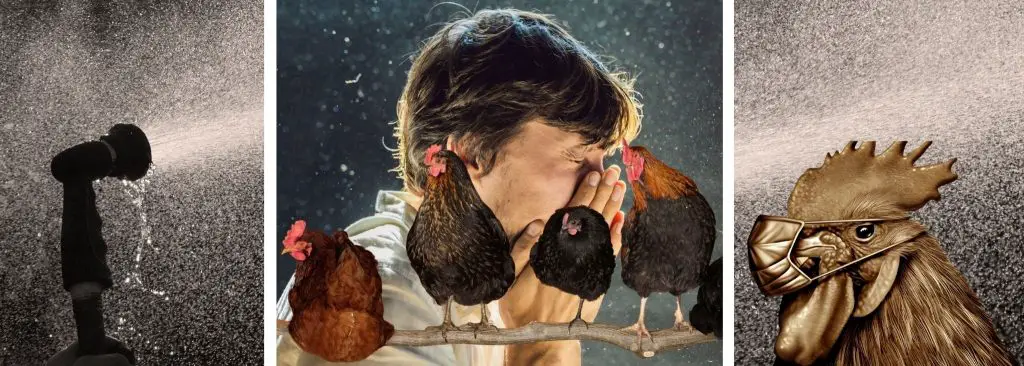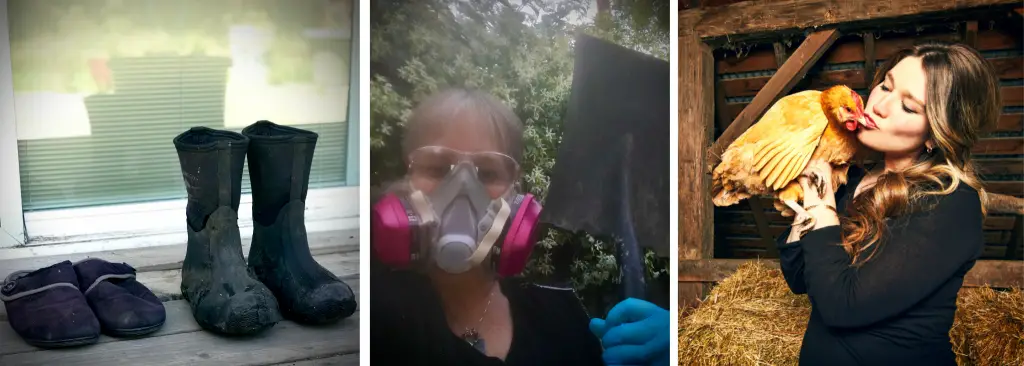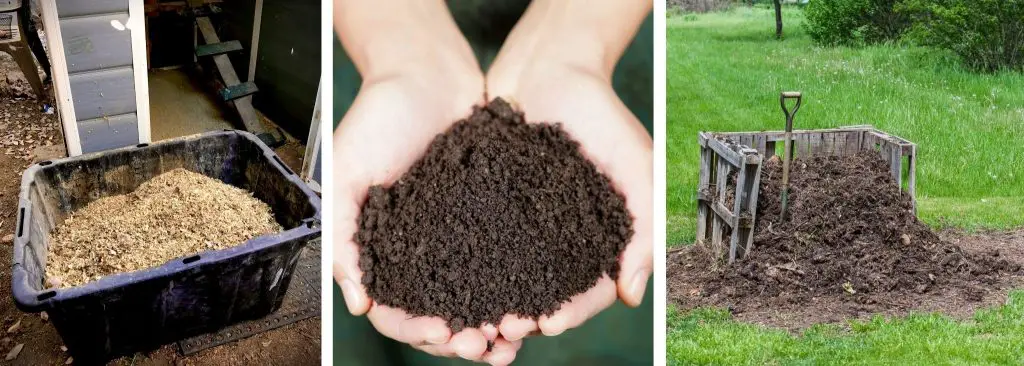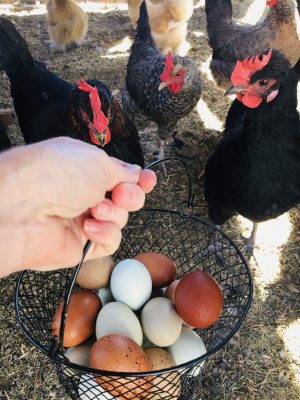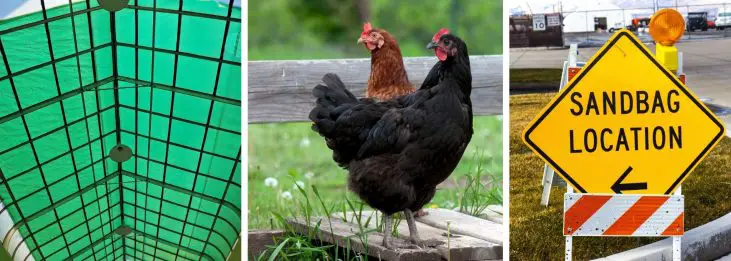
If chickens could talk, they would definitely tell you that they prefer to free range in a nice green pasture over standing in a muddy chicken run. And this is for a good reason. Muddy chicken runs can cause a whole lot of problems including:
- It becomes a breeding ground for bacteria and various diseases.
- Increases likelihood of chickens developing bumblefoot.
- Eggs become muddy.
- Muddy coops create a slipping hazard for chicken owners.
- It smells terrible.
9 Simple Ways to Fix a Muddy Chicken Run
How do you fix a muddy chicken run? There are several things you can and should do to make sure your chickens are in a dry, safe and healthy environment.
1. Placement of Coop
When deciding on the placement of your chicken coop, take into consideration what will happen if you were to have a big rain storm. Here are a few suggestions to keep in mind when deciding on a location for your chicken coop:
- Build or place your chicken coop on higher ground.
- Don’t build it at the bottom of a hill.
- Don’t build it near a river, stream or body of water that can potentially spill over into the coop or run.
2. Dig Trenches to Divert Water from Chicken Coop
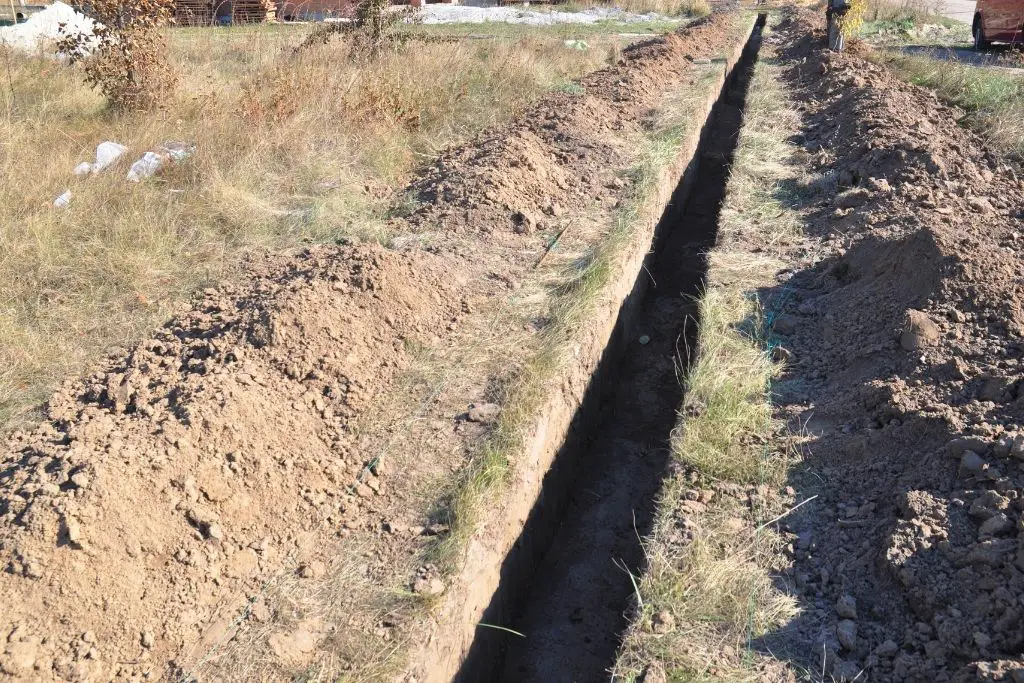
Because of limited space, not everyone is able to choose where they want to build or place their chicken coop. If this is the case, you may need to dig trenches in order to divert water away from the coop should you get quite a bit of rain.
The trench that you dig should lead water to an area that can allow for better drainage.
How to Divert Water Away from a Coop with a Drainage Trench
- Dig a trench 1 1/2′ deep, 12″ wide.
- Lay 3″ of 3/4″ drainage rock at the bottom of the trench.
- Allow for a ground slope of 1/4″ per foot of drain pipe used.
- Lay 4″ perforated drainage pipe, with holes closer to the bottom.
- Cover top with 3/4″ drain rock to ground level.
3. How to Keep a Chicken Run Dry Using Tarps
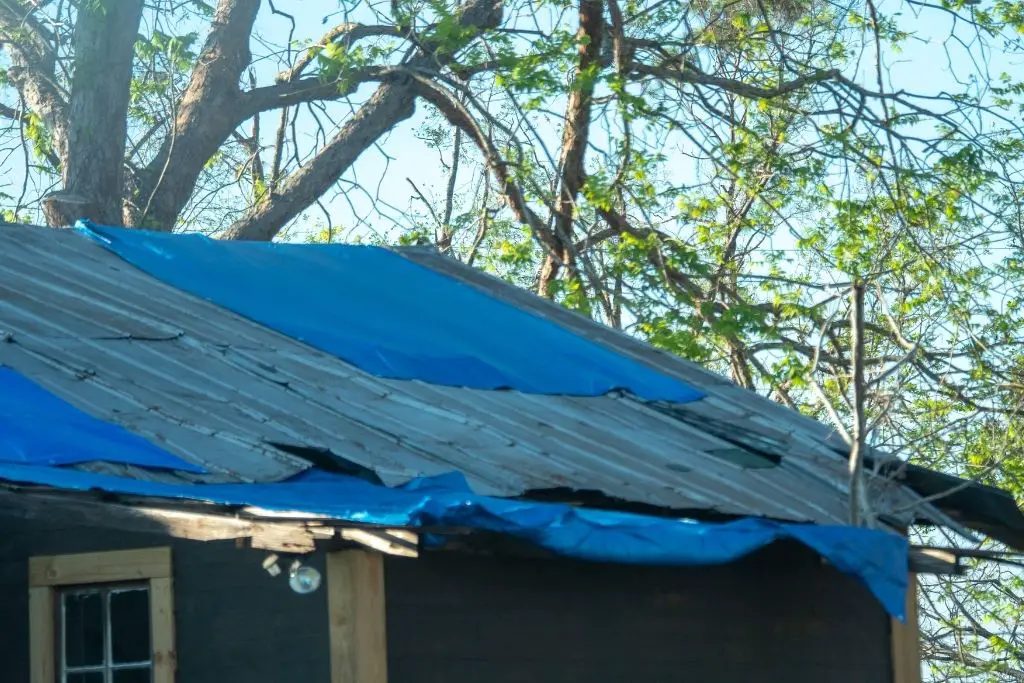
If you are finding standing water or increased moisture in your chicken coop, you very likely wither have a roof leak or water is blowing in from the unprotected sides of the coop.
Chicken runs that are open to the elements can get muddy quite quickly. Muddy chicken runs are breeding grounds for bacteria and various other diseases.
A chicken run that smells after rain is likely to have increased moisture in it (probably from the rain).
To prevent your flock from getting sick, it is important to know how to keep rain out of your chicken coop.
During windy weather, I find that by connecting a tarp to the sides of my chicken run it helps to stop the rain from blowing inside.
If you have an open chicken run, consider using a tarp to cover at least half of it. This way, your flock has a nice dry area to retreat to.
Tips for Covering Your Chicken Coop or Run With a Tarp
- Get a good quality tarp that can withstand the elements of rain, wind and snow.
- Make sure that the tarp has reinforced islets for anchoring it down.
- Use bungee cords to securely anchor your tarp to the chicken run at all 4 corners.
- Use zip ties at several places around your coop to connect additional islets of your tarp directly to your chicken wire.
- When securing a tarp, make sure that the roof has a slight slope to it to allow rain and snow to fall from it.
4. Sandbags
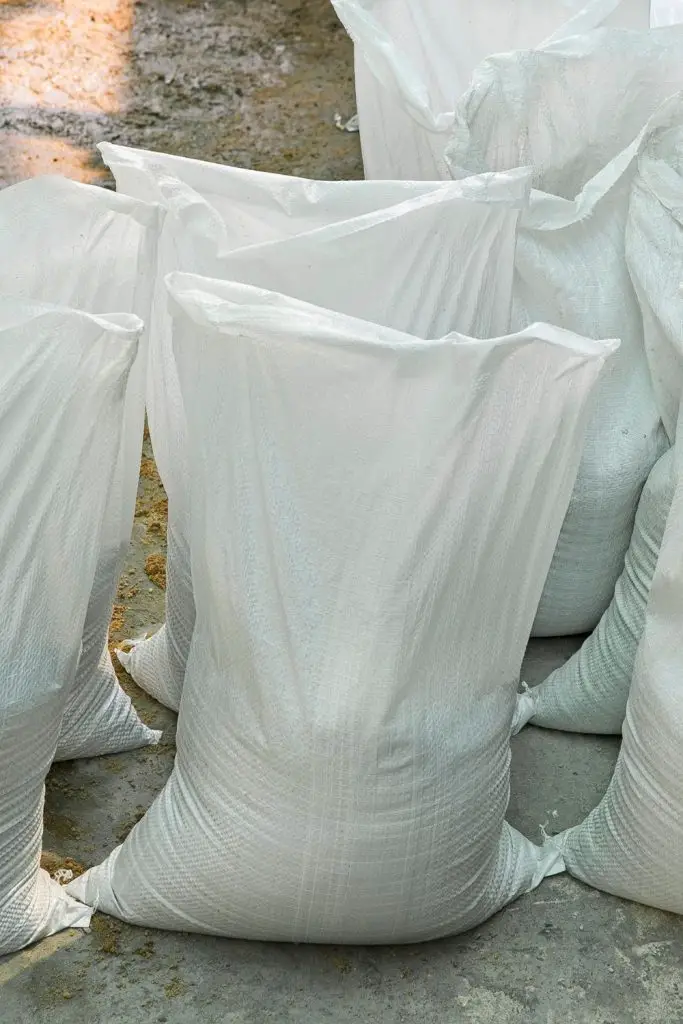
If your chicken run is located in an area that is prone to flooding and getting muddy, a quick and simple option is using sandbags to divert the water. Consider storing some burlap sacks filled with coarse sand for flash flooding emergencies.
Most water districts will provide sandbags at no cost to you during the rainy months, late November through April. Check with your local water district to see what locations sandbags are provided, free of charge.
Many cities provide the sand and burlap sacks and it is up to you to fill the bags. If this is the case, fill each burlap sack 2/3 full. Consider filling and leaving a few extra for the next person that needs to get a few bags.
Properly stacking sandbags around your chicken run are an excellent way to divert water, but it will not stop all water from getting through.
| TIPS FOR USING SANDBAGS |
|---|
| FILL BURLAP SACK 2/3 FULL |
| DON’T OVERFILL. FILLED SANDBAGS CAN WEIGH UP TO 20 LBS. |
| YOU CAN TIE BAGS FOR TRANSPORT, BUT UNTIE BAGS FOR PLACEMENT. |
| PLACE BAGS LENGTHWISE, LIKE BRICKWORK. |
| AT THE END OF THE ROW, TUCK UNDER THE FLAP. |
| TAMP DOWN THE FIRST ROW BEFORE STARTING ANOTHER ROW. |
| STAGGER THE ROWS LIKE BRICKWORK. |
| TAMP EACH ROW BEFORE ADDING ANOTHER. |
| DON’T STACK HIGHER THAN ONE FOOT. |
| DON’T REUSE SANDBAGS. |
| DON’T STORE SANDBAGS WET. THEY CAN GROW MOLD. |
| STORE UNUSED SANDBAGS IN A DRY LOCATION. |
| USED SAND CAN BE SCATTERED OVER GRASS. |
5. Use Pine Pellets for Muddy Chicken Run Flooring
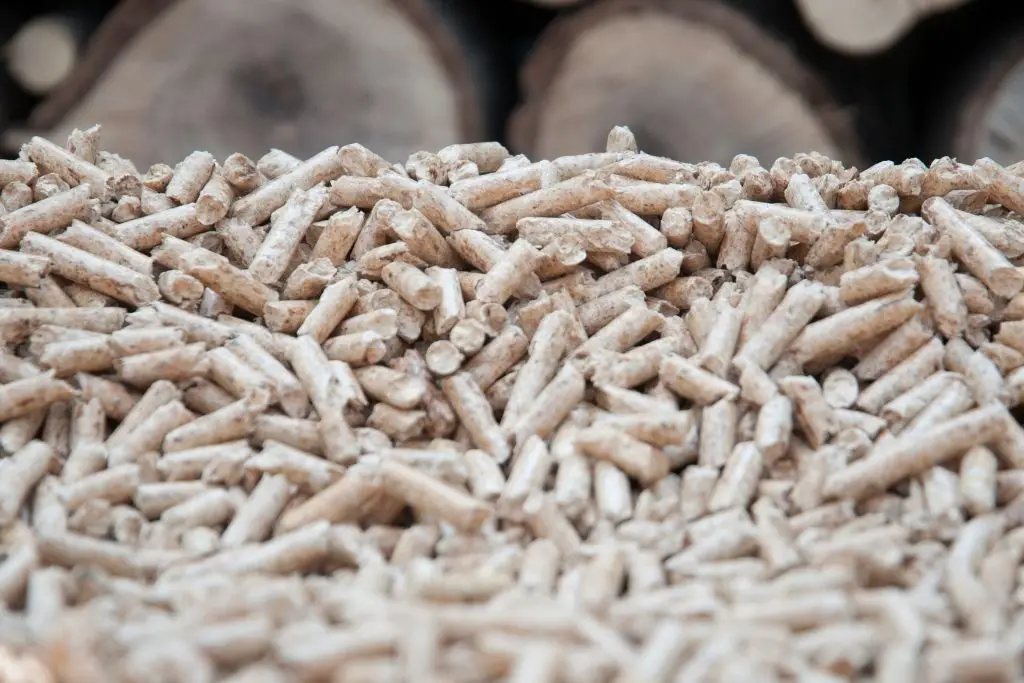
Pine pellets are compressed pine shavings and are good to use for your chicken run bedding and coop for several reasons:
| BENEFITS OF USING PINE PELLETS IN CHICKEN RUN |
|---|
| ABSORBS MOISTURE IN THE COOP AND RUN. |
| LESS DUST PARTICLES, COMPARED TO USING SHAVINGS |
| CHEAPER THAN OTHER BEDDING MATERIAL |
| READILY AVAILABLE AT MOST TRACTOR SUPPLY STORES |
| PLEASANT SMELL |
| COMPOSTS WELL |
| HELPS PREVENT MUDDY CHICKEN RUN |
| SIMPLE TO SPREAD IN CHICKEN RUN |
| PEST RESISTANT |
6. Add Wood Chips (not sawdust) for Muddy Chicken Run Flooring
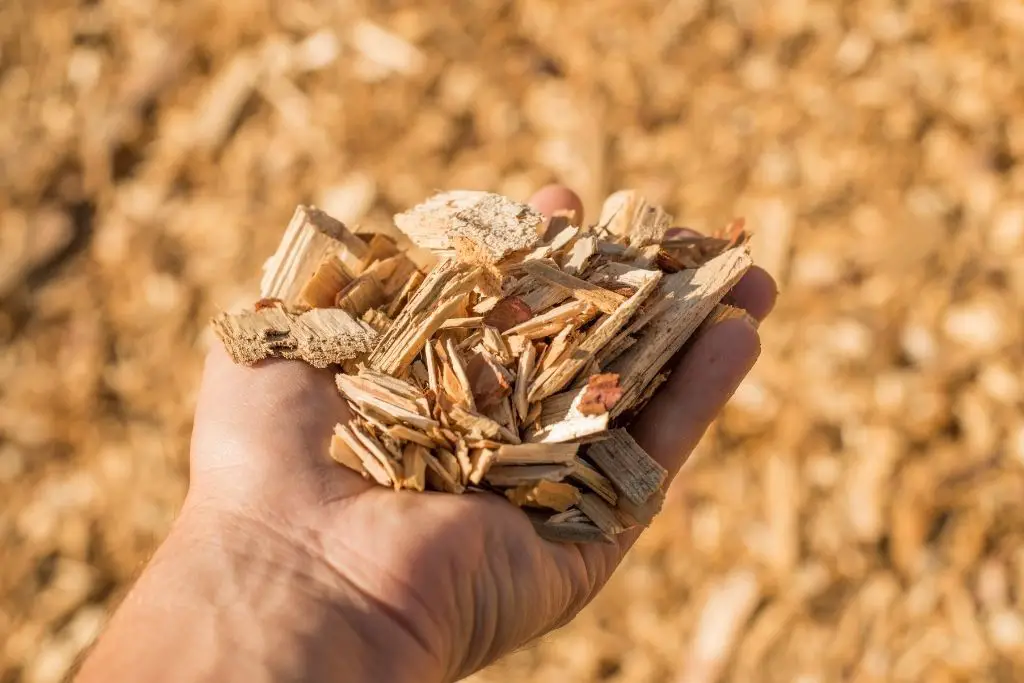
Add up to 8″ of wood chips to your chicken run and coop area to keep it from getting muddy. This works great for both muddy chicken coops and muddy chicken runs. I have found wood chips to be super absorbent and one of the best mediums to use to keep my chickens from walking in the mud.
Why Wood Chips are One of the Best Bedding Material for a Chicken Run
- Helps to keep the chicken run from getting muddy.
- Bugs like to hide under the wood chips and chickens love to peck and scratch the ground foraging for them.
- Wood chips are mainly made up of carbon material.
- They are easy to wash and reuse.
- Wood chips are great at absorbing the smell, including chicken manure.
- Over time, wood chips decompose, helping to speed up the decomposition of chicken manure.
7. Grass Clippings in a Chicken Run and Coop
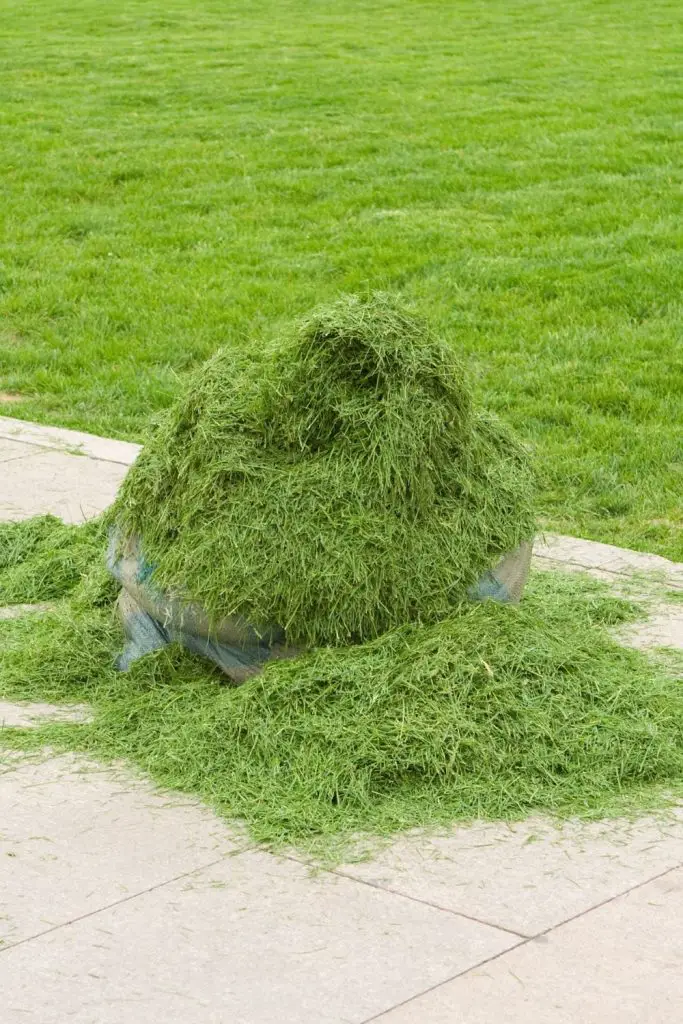
Grass clippings in a chicken run or coop are not going to be super absorbent, but make a great addition to any other bedding material. Spread it out on a tarp and let it dry out in the warm sun before adding it to your chicken run. It will help to keep the chickens off the muddy ground.
| BENEFITS OF USING DRIED GRASS CLIPPINGS IN CHICKEN RUN |
|---|
| HELPS TO KEEP RUN FROM GETTING MUDDY |
| IT’S FREE |
| IT BREAKS DOWN WELL. |
| WORKS GREAT FOR USING THE DEEP LITTER METHOD. |
| CHICKENS CAN EASILY TURN IT. |
| IT DOESN’T SMELL. |
8. Using Sand for Muddy Chicken Run Flooring
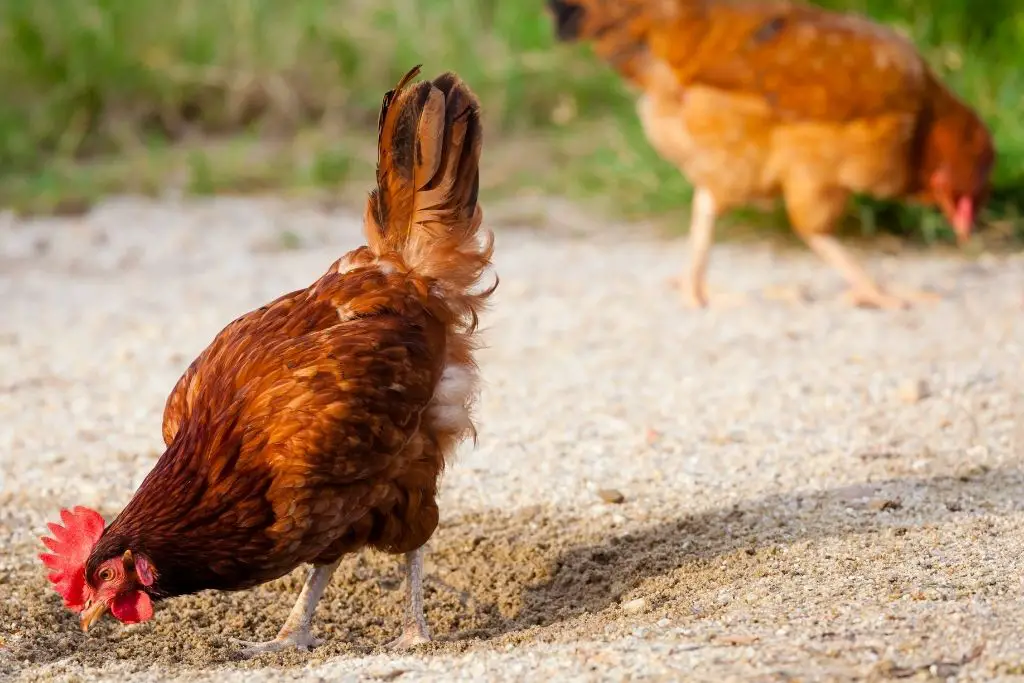
Some people add a few inches of sand to the chicken run to avoid a mud mess. Water will drain through the sand, instead of making puddles of mud.
PROS OF USING SAND IN A CHICKEN RUN:
- Prevents muddy chicken run.
- Sand allows for drainage.
- Sand is easy to clean the chicken poop out of.
- It only needs replaced 2-3 times a year.
- Your chickens will enjoy dust bathing in it.
- It doesn’t go bad.
- Sand less likely to breed bacteria.
- Less flies with sand for bedding.
- No ammonia smell from chicken poop.
CONS OF USING SAND IN A CHICKEN RUN:
- Sand is not insect resistant.
- Need to use delousing powder to stop the spread of lice and mites.
- Sand can freeze in the winter.
- Sand can be hot if in direct summer sunlight.
9. Use Pallets for Muddy Chicken Coop
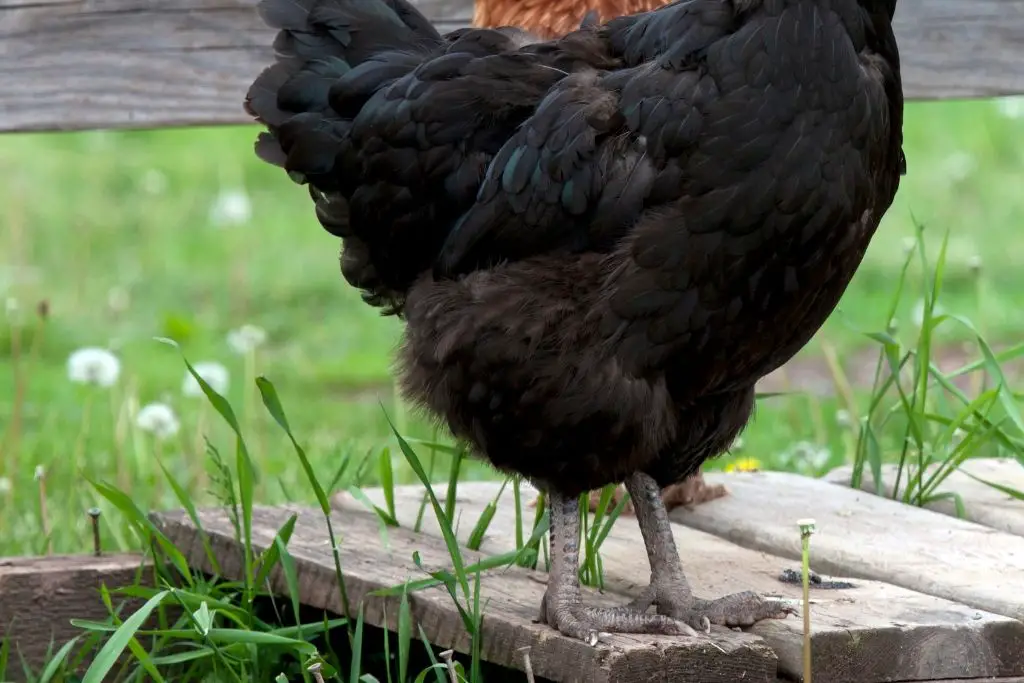
Using pallets is a simple and quick way to get your chickens off of a muddy floor. While it may not be a permanent solution to water getting into the flooring of your chicken run, it will keep your chickens off of the mud.
After the water recedes it is recommended to use an alternate method, such as sandbags to help divert the water. Then use your choice of bedding: pine pellets, wood chips, grass clippings or sand to help minimize any mud.
Keep your eye out for free pallets. You can search your local Craigslist, NextDoor, Facebook Marketplace or ask any local small businesses. You may even find some out by dumpsters.
CONCLUSION: How to Fix a Muddy Chicken Run
If you are raising chickens it is important to take whatever necessary precautions to avoid having your chickens stand in a muddy chicken run. Muddy runs will breed bacteria, passing on illnesses to your chickens.
There are several things that you can do to make sure your chickens are in a dry, safe and healthy environment:
- Place the chicken coop and run in a location that will not be in a potential flood zone.
- Dig a trench to divert water from getting into your chicken run.
- Place tarps over your chicken run.
- Stack sandbags to divert water.
- Use pine pellets to absorb water and keep chickens off of the mud.
- Spread wood chips in the run.
- Dry grass clippings and spread in chicken run.
- Use sand as bedding.
- Get the chickens off of the ground by using pallets.
How to Fix a Muddy Chicken Run– https://www.backyardchickensmama.com/how-to-fix-a-muddy-chicken-run/

